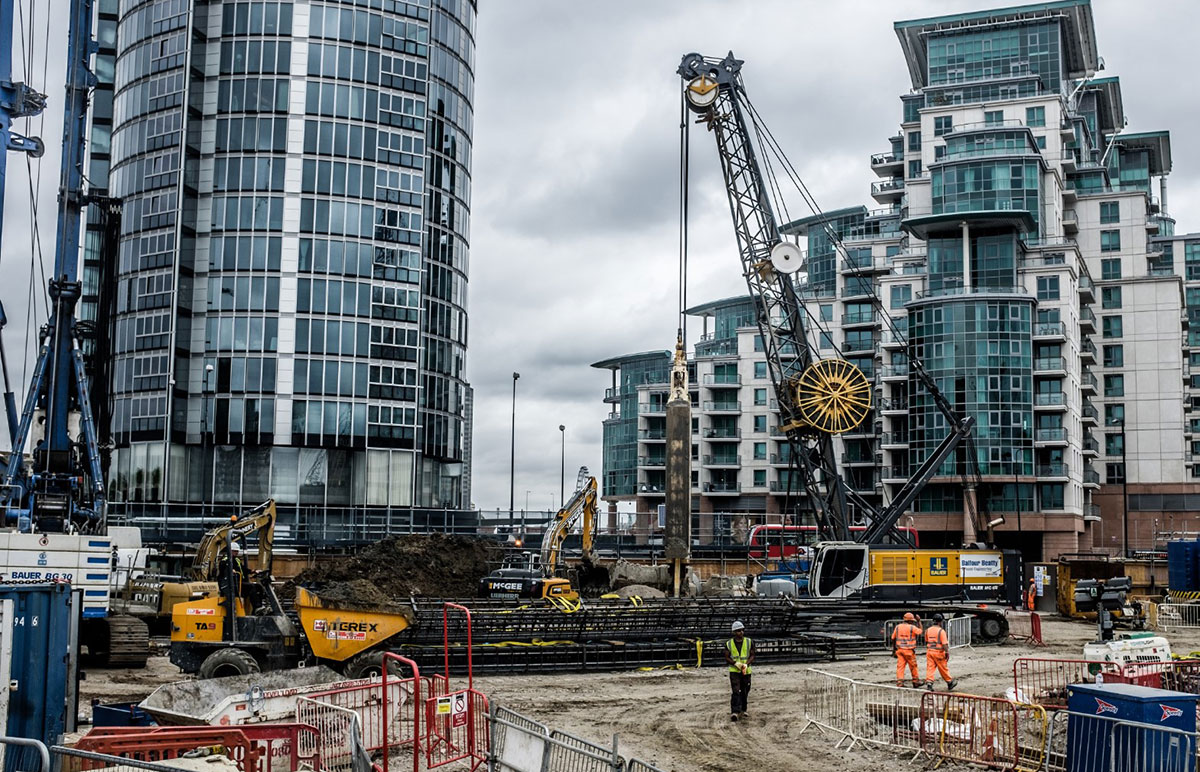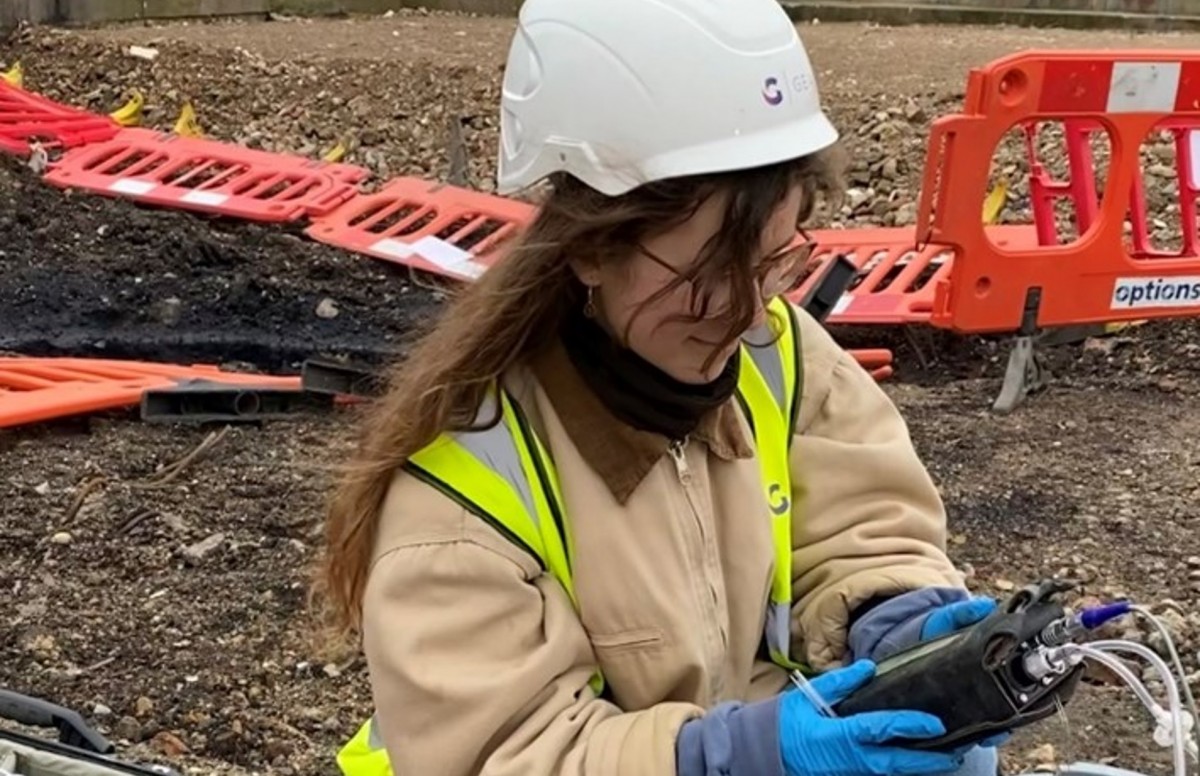Getting The Geotheta To Work
Table of ContentsThings about Geotheta4 Simple Techniques For GeothetaUnknown Facts About GeothetaThe smart Trick of Geotheta That Nobody is DiscussingGeotheta - Truths

They carry out website investigations, gather samples, do research laboratory tests, and evaluate data to examine the suitability of the ground for building and construction tasks - Tailings Engineer. Based upon their findings, geotechnical designers offer suggestions for foundation layout, incline security, preserving structures, and reduction of geotechnical dangers. They team up with various other specialists, such as designers, structural designers, and construction groups, to guarantee that geotechnical considerations are integrated into the general project layout and execution
By evaluating the habits and residential properties of soil and rock, they can identify potential geotechnical hazards such as landslides, soil settlement, or incline instability. Their competence helps protect against failures or mishaps that can endanger lives and property. Here are some comprehensive responsibilities and responsibilities of a geotechnical engineer: Site Examination: Geotechnical engineers conduct site investigations to collect data on subsurface problems.
They interpret the data to understand the residential or commercial properties and actions of the soil and rock, including their toughness, leaks in the structure, compaction attributes, and groundwater conditions. Geotechnical Analysis and Layout: Geotechnical designers examine the data accumulated throughout website examinations to evaluate the stability and suitability of the website for building and construction jobs. They carry out geotechnical computations and modeling to review variables such as birthing capability, negotiation, slope stability, lateral planet stress, and groundwater circulation.
The Basic Principles Of Geotheta
Structure Layout: Geotechnical engineers play an important role in developing foundations that can securely sustain the intended framework. They evaluate the soil problems and load demands to determine the suitable structure kind, such as superficial structures (e.g., grounds), deep foundations (e.g (https://www.dreamstime.com/ianhammond2191_info)., heaps), or specialized methods like dirt renovation. They think about factors such as negotiation restrictions, bearing capacity, and soil-structure interaction to create ideal foundation styles
They evaluate building plans, screen website tasks, and perform field examinations to confirm that the design suggestions are adhered to. If unpredicted geotechnical issues occur, they examine the scenario and offer recommendations for remediation or changes to the layout. Threat Evaluation and Mitigation: Geotechnical engineers examine geotechnical dangers and dangers connected with the job site, such as landslides, liquefaction, or dirt erosion.

Collaboration and Communication: Geotechnical engineers work closely with various other professionals entailed in a task, such as engineers, architectural engineers, and building and construction groups. Efficient communication and cooperation are necessary to incorporate geotechnical factors to consider right into the general project design and building and construction procedure. Geotechnical designers give technological expertise, answer questions, and ensure that geotechnical requirements are met.
Geotheta - Truths
Here are some kinds of geotechnical engineers: Foundation Designer: Structure engineers focus on making and analyzing foundations for structures. They evaluate the dirt problems, load demands, and website qualities to figure out one of the most appropriate foundation type and layout, such as superficial foundations, deep structures, or specialized methods like stack structures.
They assess the aspects affecting slope stability, such as dirt residential properties, groundwater conditions, and slope geometry, and create methods to protect against slope failings and minimize risks. Quake Engineer: Earthquake engineers concentrate on examining and developing frameworks to endure seismic pressures. They examine the seismic danger of a site, evaluate soil liquefaction potential, and develop seismic style criteria to make sure the safety and security and durability of frameworks throughout earthquakes.
They do field testing, collect samples, and examine the collected information to define the dirt residential or commercial properties, geologic developments, and groundwater problems at a website. Geotechnical Instrumentation Designer: Geotechnical instrumentation engineers concentrate on tracking and measuring the actions of dirt, rock, and structures. They mount and keep instrumentation systems that keep an eye on elements such as soil negotiation, groundwater degrees, incline activities, and structural variations to assess efficiency and provide early cautions of prospective issues.
Some Known Incorrect Statements About Geotheta
They perform examinations such as triaxial tests, consolidation tests, straight shear examinations, and permeability tests to collect data for geotechnical evaluation and style. Geosynthetics Designer: Geosynthetics engineers specialize in the design and application of geosynthetic products, such as geotextiles, geogrids, and geomembranes. They make use of these products to enhance dirt stability, reinforce inclines, give drainage remedies, and control disintegration.
They have a tendency to be investigative individuals, which means they're intellectual, reflective, and curious. They are interested, methodical, logical, logical, and sensible. Some of them are also social, suggesting they're kind, charitable, participating, patient, caring, useful, compassionate, tactful, and pleasant - Tailings Engineer.
In the workplace environment, geotechnical engineers use specialized Discover More Here software application tools to perform computations, produce styles, and evaluate data. They prepare reports, review project requirements, connect with clients and staff member, and coordinate task tasks. The office setup offers a favorable atmosphere for study, analysis, and partnership with various other specialists involved in the project.
The Only Guide to Geotheta
They often visit project websites to perform site investigations, evaluate geotechnical conditions, and gather information for evaluation. These visits involve taking a trip to different locations, often in remote or difficult surfaces. Geotechnical designers might perform dirt sampling, conduct tests, and screen building tasks to make sure that the geotechnical facets of the job are being carried out correctly.
Geotechnical engineers additionally work in specialized geotechnical laboratories. In these facilities, they conduct experiments, execute examinations on dirt and rock examples, and analyze the design buildings of the materials. Geotechnical research laboratory designers function extensively in these settings, taking care of screening equipment, operating instruments, and videotaping data. They team up with other research laboratory staff to guarantee exact and trustworthy screening outcomes.